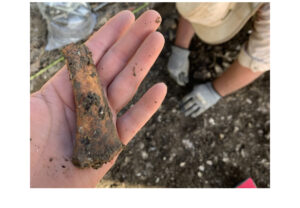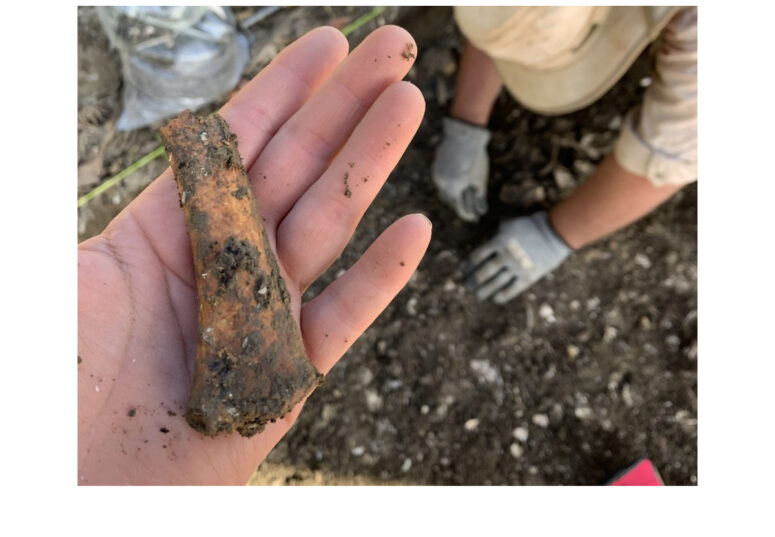
Artifact at slave quarters in St. Mary’s County
The Maryland Department of Transportation State Highway Administration (MDOT SHA) and St. Mary’s College of Maryland archeologists are working to unearth a 300-year-old slave quarters site at a historic Jesuit plantation in Southern Maryland.
Many of the archaeological remains lay buried in farm fields within Newtowne Neck State Park, which is managed by the Maryland Department of Natural Resources (DNR), and are located a stone’s throw from an 18th century brick manor once occupied by Jesuit missionaries. Early indications suggest the slave quarters may date to around 1700.
“The Jesuits were prolific in their record keeping, but very little survived on the enslaved African Americans who worked the fields and served the Catholic Church,” said Dr. Julie Schablitsky, MDOT SHA’s Chief Archaeologist. “If there was ever a place in Maryland that holds the story of diverse cultures converging to find religious freedom in an environment of conflict, sacrifice and survival, it is here.”
Early documents mention the sale of 272 slaves from Maryland in 1838, including those who lived at Newtown Manor. Descendants of these African Americans are found in Maryland and across the United States. The Rev. Dante Eubanks, a resident of Leonardtown, traces his family to this plantation.
“To be able to stand in the exact place where my ancestors lived and endured is a powerful experience,” the Rev. Eubanks said. “We need to remember these stories, they are important to our history and healing.”
The research site is located along MD 243 (Newtowne Neck Road). MDOT SHA archaeologists are performing research as part of the agency’s role as a partner with Maryland Rediscovery 400, an initiative to promote and interpret Southern Maryland’s rich history. Archaeologists are using metal detectors to pinpoint the locations of early cabins, places where the enslaved left evidence of their lives in broken clay tobacco pipes, ceramic cups and rusty nails.
“MDOT SHA’s participation in this archaeological dig is a unique way to experience history firsthand,” said SHA Administrator Tim Smith. “I’m proud of the work this team of archaeologists is doing to preserve the history of early Marylanders.”
Archaeologists have been on this project since October 19 and will continue digging through this Friday, October 30, weather permitting. The artifacts will then be analyzed to learn more about the people who lived just beyond the manor house. All the findings will be incorporated into interpretive signs and materials associated with the Religious Freedom Byway and DNR visitor experience, web sites and public presentations.

Artifact at slave quarters in St. Mary’s County


